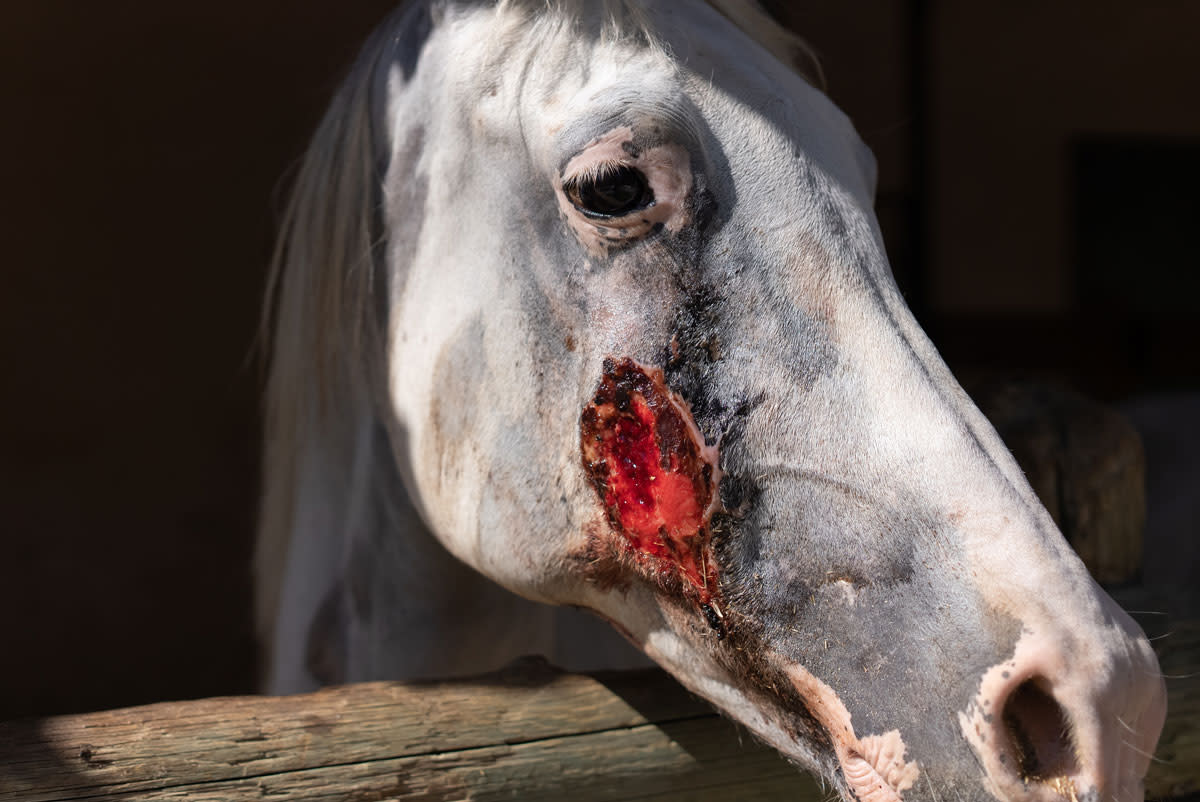
At the 2021 AAEP Convention in Nashville, Tennessee, Lynn Pezzanite, DVM, MS, PhD, DACVAS-LA, from Colorado State University, gave an informative presentation on the role that biofilms play in persistent or chronic wounds. She described biofilms as organized communities of bacteria that are attached to the surface and sometimes extend within deeper tissue layers. An envelopment of extracellular matrix and polymeric substance enables survival of bacteria even if tissue is depleted of nutrients and oxygen.
Biofilms form within 24 hours and mature rapidly within 3-4 days, at which time they are more difficult to resolve. As they detach and disperse from their original location, the host’s immune response stimulates production of nutrients that promotes biofilm survival. Bacteria differentiate into complex communities with increased resistance to anti-microbial drugs (AMDs), biocides and environmental challenges. Often, biofilms are polymicrobial and act synergistically to amplify virulence.
The primary bacteria responsible for biofilms are Pseudomonas spp., Enterococcus spp., and Staphylococcus spp.
Biofilm-producing bacteria can occur in any wound type, although predisposing factors are important based on immunocompetency of the patient, age, nutritional deficiencies, sepsis, corticosteroid administration, antibody deficiency, chronic stress or PPID. Reduced vascular perfusion to the region and extensive wound contamination, foreign bodies, surgical implants or a bone sequestrum are other predisposing factors.
A greater frequency of biofilms is found in chronic wounds (60-100%) as compared to acute wounds (6%). An affected wound might not look particularly infected but if it is non-healing and chronic, not progressing and lacks epithelialization, or the wound worsens when AMDs are discontinued, then biofilms should be suspected.
A chronic inflammatory state that is recalcitrant to treatment despite addressing other morbidities is typical of a biofilm-infected wound. Certain indirect clinical indicators are typical of biofilms: a) excess moisture; b) poor-quality granulation tissue; c) heat, swelling, sensitivity/pain and redness; d) history of persistent or recurrent infection; and e) negative culture results despite overt signs or suspicion of infection.
Traditional culture techniques are inadequate to identify bacterial species that create biofilms. A definitive diagnosis relies on scanning electron or confocal microscopy. Samples of deep tissue biopsies and tissue swabs are collected following wound debridement and submitted to a diagnostic lab.
Successful management relies on early recognition and targeted treatment, stresses Pezzanite. A couple of techniques are necessary to overcome the persistence of biofilms in a wound:
- Repeated lavage and debridement of the wound.
- Delivery of appropriately-identified AMDs at the appropriate concentration for a sufficient period of time.
Debridement should be aggressive and performed as often as necessary to remove unhealthy tissue. This is accomplished with sharp scalpel excision, low frequency ultrasound, pulsed water jet lavage, or with mechanical effects of antibiotic-impregnated gauze. Removal of devitalized tissue exposes remaining bacteria to AMDs.
Topical treatment relies on surfactants and/or topical dressings impregnated with AMDs. As efficacy wanes over 24 hours, these need frequent changes. If improvement is not seen in 3-4 days, it is important to review all aspects of the case, including repeat of bacterial culture and sensitivity. The client also needs to be apprised of costs and the ongoing medical plan.








